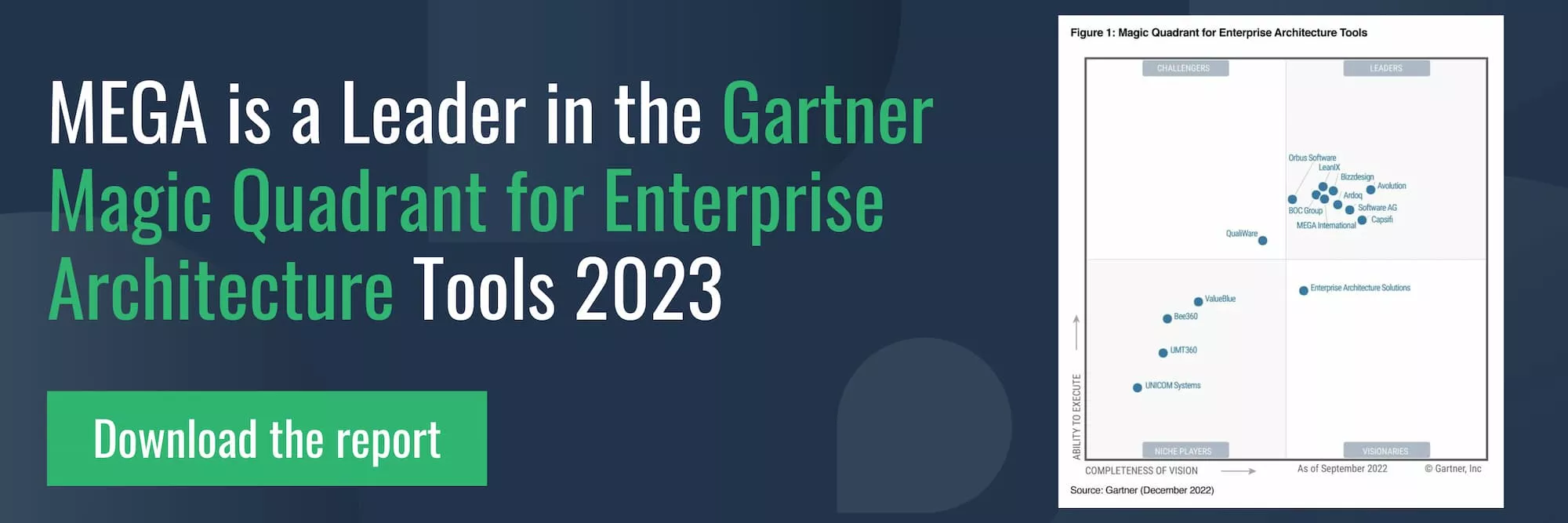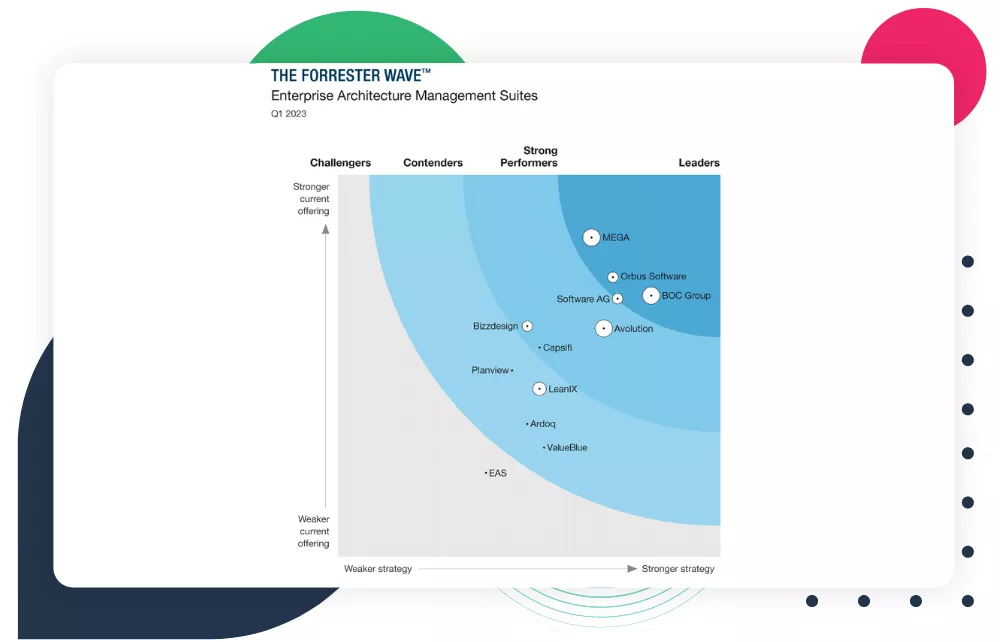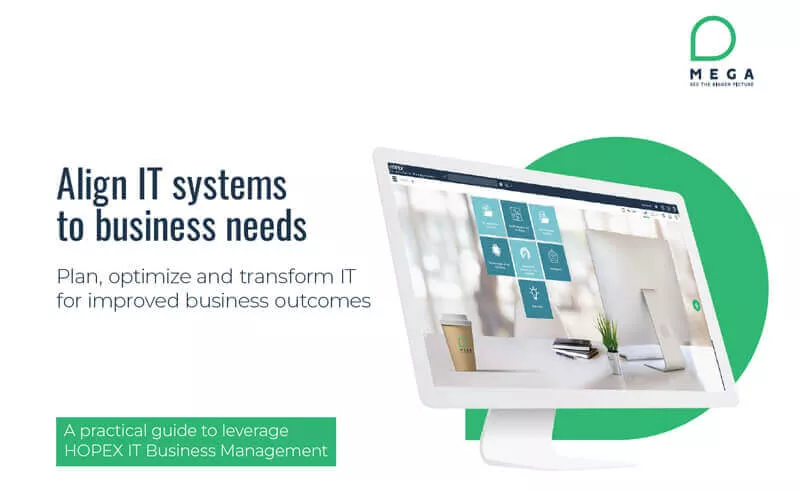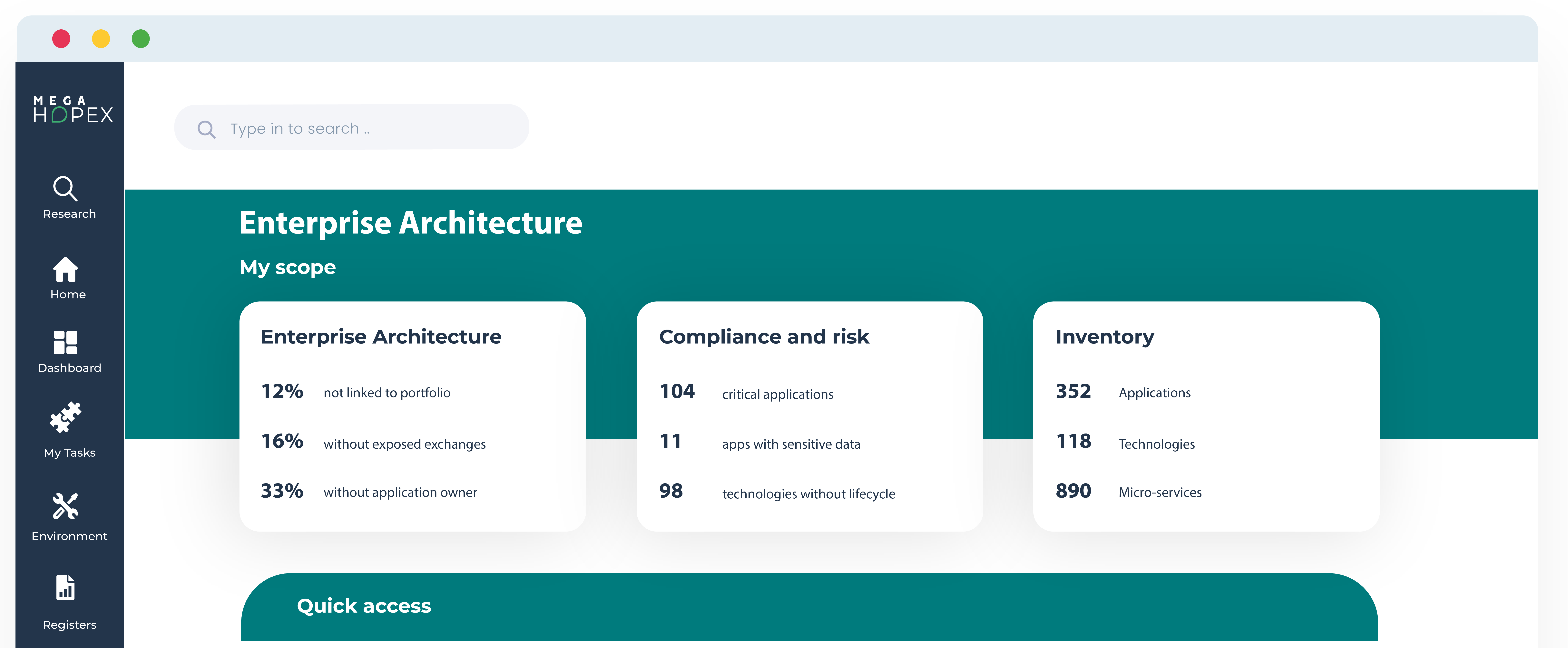
From the CIO's Desk: The Criticality of Enterprise Architecture in Digital Businesses
A chief information officer (CIO) plays a critical role in managing IT resources within an organization. Their on-the-ground experience allows CIOs to provide valuable insights into how enterprise architecture (EA) can benefit modern businesses.
The recent MEGA EA Exchange 2023 digital conference hosted a discussion between Michael Fulton, CIO at Vernovis, and Luca de Risi, CEO at MEGA International. This fascinating interview provided a firsthand view of why EA is essential for a successful modern company. The two experts explored the convergence of strategic planning, innovation, and adaptability through the lens of IT leadership.
CIO's Expectations from Enterprise Architects
Enterprise architects should focus on developing strategy and inspiring innovation using emerging technologies. They can then use this expertise to advise the CIO on how to bring new developments into the organization. Enterprise architects can help influence the organizational strategies of CIOs and their executive partners. An EA professional should lead the transformation of the CIO’s strategy into an executable plan.
Digital transformation is the application of technology and data to transform a company's business model and customer experience. It is a major area for enterprise architects to concentrate their efforts on.
Enterprise architects play a key role in both external and internal digital transformation. As well as working externally, an EA professional can apply the same digital transformation concepts internally. The internal IT organization can be viewed as its own business. The other parts of the organization can then be seen as customers of the IT sector. Embracing this agility allows enterprise architects to make full use of their knowledge. Emerging technologies can be harnessed to benefit both sides of an organization.
Enterprise Architects’ Expertise to Drive Innovation
Enterprise architects are not experts in every domain. So how can they drive innovation? Should enterprise architects be pure innovators to drive technology innovation? Or should their role be purely one of governance?
A CIO can reasonably expect that their architects have built up a level of expertise over time. It is important that architects have a broad yet thorough understanding of an organization.
“Architects don't have to be experts on every topic. However, they should be more knowledgeable than the typical person about all the different pieces of an organization. They have to be able to make connections. They need to be able to connect the dots to a business need or an opportunity to gain synergies from working together across the organization.”
Enterprise architects also need to scan the external landscape to understand all the possibilities created by emerging technologies.
“They don't have to understand how large language models work, what it means to create a transformer, and how generative AI is actually built. They don't have to understand the details of a blockchain. But they do need to understand the new ‘what's possibles’. What are the things these emerging technologies are going to enable us to do that we've never been able to do before?”
Best Practices to Bring New Technologies to an Organization
EA professionals should know what new technologies can and cannot accomplish right now. To make the most of emerging technology, an enterprise architect needs to understand the technology and how it can be applied. They must know the business architecture of the organization. This involves understanding what the business processes are, and what capabilities are not being delivered.
An enterprise architect can then run interviews with process owners to see what's driving the need for the technology. They need to identify the specific outcomes that stakeholders are looking for. The job of the enterprise architect is to match the need to the new technology capability. The architects are the connectors. They are the people who can see these connections and bring these connections forward.
Enterprise architects can be inspired by new ‘what's possibles’ but they shouldn’t be beholden to technology. For instance, there may be potential places where generative AI can deliver real significant value. There may also be automation and integration opportunities. These opportunities don't require heavy lifting or the additional capability of generative AI. EA professionals can drive transformation inspired by generative AI without being beholden to it. An enterprise architect needs to use all the tools in their toolbox to deliver the desired business outcome.
“That's the uniqueness of architecture to me. The architect has the broad perspective to be able to see things in a way that most parts of the organization can't because IT tends to be fairly siloed in a lot of ways.”
IT Governance and Enterprise Architects
Businesses now operate in a global SaaS landscape. A sales or marketing team can easily purchase software without any input from an enterprise architect. So, do architects always need to be the innovators proposing and designing IT recommendations?
This comes back to the skill set of the architect. Architects must have the ability to broadly expand their knowledge of an organization. This is valuable both in terms of innovation and governance.
“Architects play a critical role in the governance space. That team who bought a piece of software that they thought was amazing doesn't have an architect’s broad view of the organization. They don’t understand that six months ago the exact same piece of software was purchased at a cheaper price, for instance. The architect sees that. The architect can step in and play a governance role. They can say ‘We really don't want to go down this path because we've already made a choice.’”
When enterprise architects make innovation and governance decisions, they need to be led by business architecture. Decisions should be driven by an understanding of the different organizational capabilities. If those capabilities are market differentiating, then best-of-breed software may be the right choice. If not, then it may be better to settle for an existing platform than a new tool.
The Importance of Data in Enterprise Architecture
Data is critically important to EA. How is data flowing through an organization? Data is both the input and output of business processes. Understanding how it flows or where it resides is crucial.
“What is the data we need in IT? It's the information we have in our EA tool about our enterprise architecture landscape. What applications do we have? What are the business capabilities we have? We want that data to flow through everything we do within the IT organization. We want everybody to be on the same page. We want everybody to work off the same sheet of music.”
Integration is essential. The more ways that data can be used the more the organization will prioritize keeping the data up to date. In some cases, a single platform where data can be used in multiple different use cases is optimal.
Data can be used to develop a detailed and accurate business capability map. EA professionals can use this to drive business architecture and assess risk across an organization. The capability map ensures business continuity across the organization and safeguards the quality of data.
“If different stakeholders are looking at the same data and if that data is wrong, you're much more likely to see that it's wrong and to invest in getting it right.”
Showcasing the Value of Enterprise Architecture Teams
Although organizations are well advised to invest in maturing their architecture practice, not all CIOs see the value in EA.
Credibility is vital to showcasing the value of an EA team. This can be difficult to achieve if a CIO has never worked with a truly top-notch enterprise architecture team. The EA team will need to build up its credibility. This can be done by getting the CIO involved in projects. With experience, a CIO can become a technical expert who can help the EA team drive decisions.
“I think the number one thing you need to do with your enterprise architecture practice is to figure out how you can add value to the organization.”
EA professionals must be able to show that they can add clear and distinct value to the organization. They also need to be able to track that value. Unfortunately, many enterprise architecture organizations fail to effectively showcase the value they deliver. If there is a change in CIO or a business downturn, this can result in cuts to the enterprise architecture group.
“The easiest place to add value to the CIO quickly is application portfolio management. It's proactive, it's tangible, and it's realizable. For me, when you're going to try to make this shift from reactive working on projects to proactive that's where I recommend organizations start. My next place to go to for real strategic value is business capability mapping.”
Enterprise Architecture Related Content
Shift from a documentation tool to an operational tool and accelerate business transformation
MEGA HOPEX for Enterprise Architecture
Request a demonstration of HOPEX for EA, and see how you can have immediate value of your projects.








